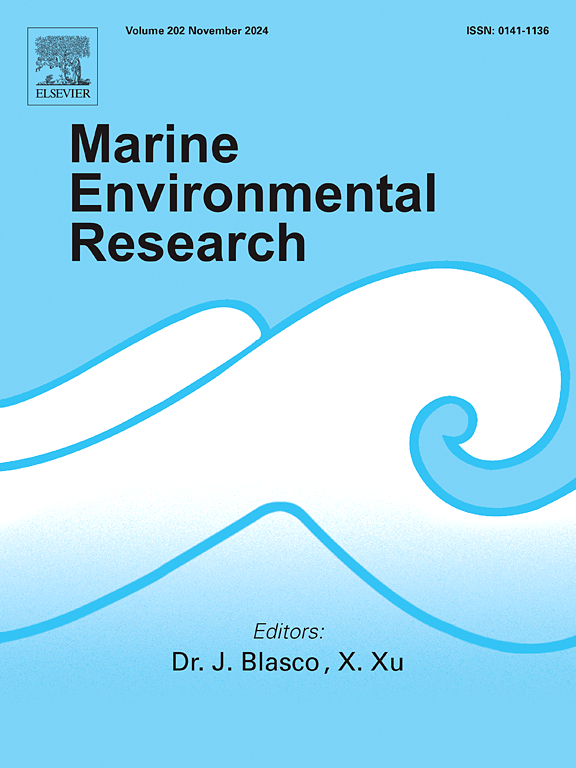Assessment of the Rugulopteryx okamurae invasion in Northeastern Atlantic and Mediterranean bioregions: Colonisation status, propagation hypotheses and temperature tolerance thresholds
IF 3
3区 环境科学与生态学
Q2 ENVIRONMENTAL SCIENCES
引用次数: 0
Abstract
The recent proliferation of the invasive macroalga Rugulopteryx okamurae in the Mediterranean and Northeastern Atlantic regions poses significant ecological and socioeconomic threats. This study analyses the current state of knowledge on the invasion, assesses the primary dispersal vectors, and evaluates its invasive potential through temperature tolerance. Using Web of Science and Google Scholar databases, publications from 2004 to 2024 were reviewed and categorized into five key areas: physiology, distribution and spread, ecological impacts, socioeconomic consequences, and management strategies. The bibliographic search evidenced a significant increase in studies concerning R. okamurae over the last years (from 1 in 2020 to 38 in 2024). The results also indicated a certain agreement regarding the vector of introduction of this alga into the Strait of Gibraltar in 2015–2016 (ballast waters of merchant ships) but the rapid spread towards Mediterranean and Atlantic areas remains unclear. Nonetheless, aquaculture activities and currents were pointed out as significant dispersal vectors. The temperature analyses highlighted the broad thermal tolerance range of R. okamurae, from 10 °C to 30 °C, which contribute to its extensive colonisation. Therefore, this study underscores the need for urgent management actions to limit the expansion of R. okamurae and mitigate the negative effects observed on coastal ecosystems and economies of colonised areas.

求助全文
约1分钟内获得全文
求助全文
来源期刊

Marine environmental research
环境科学-毒理学
CiteScore
5.90
自引率
3.00%
发文量
217
审稿时长
46 days
期刊介绍:
Marine Environmental Research publishes original research papers on chemical, physical, and biological interactions in the oceans and coastal waters. The journal serves as a forum for new information on biology, chemistry, and toxicology and syntheses that advance understanding of marine environmental processes.
Submission of multidisciplinary studies is encouraged. Studies that utilize experimental approaches to clarify the roles of anthropogenic and natural causes of changes in marine ecosystems are especially welcome, as are those studies that represent new developments of a theoretical or conceptual aspect of marine science. All papers published in this journal are reviewed by qualified peers prior to acceptance and publication. Examples of topics considered to be appropriate for the journal include, but are not limited to, the following:
– The extent, persistence, and consequences of change and the recovery from such change in natural marine systems
– The biochemical, physiological, and ecological consequences of contaminants to marine organisms and ecosystems
– The biogeochemistry of naturally occurring and anthropogenic substances
– Models that describe and predict the above processes
– Monitoring studies, to the extent that their results provide new information on functional processes
– Methodological papers describing improved quantitative techniques for the marine sciences.
 求助内容:
求助内容: 应助结果提醒方式:
应助结果提醒方式:


